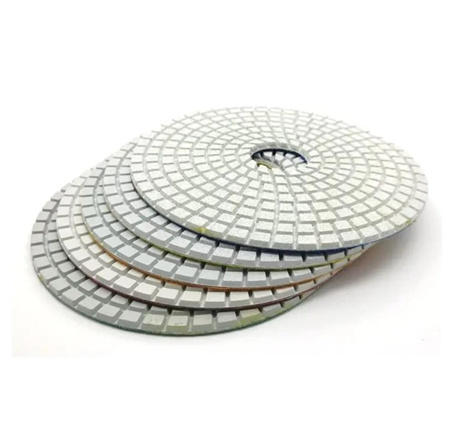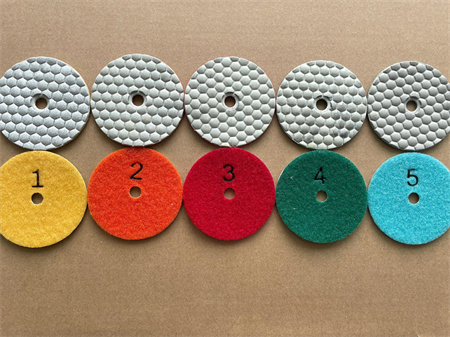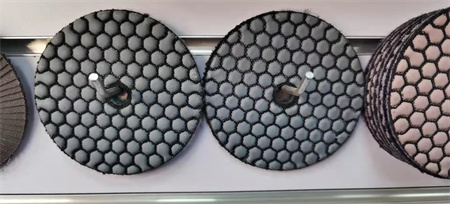A Comparative Review of Diamond Pads for Stone and Concrete
Diamond pads are indispensable tools in the world of stone and concrete polishing. Whether you’re a professional contractor, a DIY enthusiast, or someone in the stone or concrete industry, selecting the right diamond pad can make all the difference in achieving that flawless, high-gloss finish. These pads, which are often used for grinding, polishing, and honing, come in various types, each designed for specific applications. But when it comes to choosing the right one for stone versus concrete, the differences can be quite pronounced. This review delves into the characteristics of diamond pads for both surfaces, exploring their performance, durability, and efficiency.
First and foremost, the structure of diamond pads plays a key role in determining how they interact with different materials. The primary difference between diamond pads designed for stone and those made for concrete lies in the bonding matrix. Stone pads are typically softer and designed to be more forgiving, allowing them to polish delicate surfaces without causing damage. The matrix, often made of resin, is structured to ensure that the diamonds are not too aggressive, providing a gentler polishing action. This ensures that the stone’s natural finish is preserved, especially on softer materials like marble, limestone, or granite.
On the other hand, diamond pads for concrete are generally much tougher. Concrete is a more rigid material with a harder surface, and as such, the pads need to be designed to withstand a higher level of wear and tear. The bonding in concrete diamond pads is typically harder, allowing the diamonds to remain exposed longer and grind through the denser material. These pads are also often coarser in grit, which helps them cut through the tough, rough surface of concrete more effectively. This makes concrete pads ideal for tasks like grinding down uneven floors, removing coatings, or leveling out rough surfaces.

Durability is another area where diamond pads for stone and concrete differ. Stone pads, especially those used for softer stones, tend to wear down more quickly due to their gentler bonding. This is why frequent use can reduce their effectiveness over time. While stone pads are excellent for achieving that high-quality finish, they may need to be replaced more often when used on harder stones or for extended periods. In contrast, diamond pads for concrete are designed for prolonged use. The durability of these pads ensures they can withstand the abrasiveness of concrete without losing their cutting power. That said, they can become less effective on stone surfaces, as the tough bond and coarse grit can leave undesirable marks or scratches.
An often-overlooked aspect of diamond pads is their versatility. While specific pads are designed for stone or concrete, many modern pads are designed to be multipurpose. These pads can be used on both materials with a compromise in performance, but they provide a practical solution for those who work with both surfaces regularly. However, when maximum performance and quality are required, using pads specifically tailored for each material is always the best route.
Another factor to consider is the dust and debris generated during polishing. When grinding or polishing concrete, the dust can be incredibly fine and abrasive. This makes dust extraction systems essential for concrete jobs to ensure a cleaner workspace and to prolong the life of the pads. Stone polishing, while also generating dust, is generally less abrasive. Nonetheless, it still requires proper ventilation and safety measures to ensure the best results and worker safety.
Finally, the cost factor plays a significant role in decision-making. Diamond pads for concrete tend to be less expensive than those designed for stone, primarily because of the difference in the materials used and the higher manufacturing cost of the finer, more intricate pads for stone. However, while stone pads might cost more initially, their longer polishing life and superior finish can justify the investment, especially for high-end stone projects.
To wrap up, choosing between diamond pads for stone and concrete ultimately depends on the task at hand. Stone pads offer a more delicate approach, perfect for achieving a refined, glossy finish, while concrete pads are built for aggressive grinding and heavy-duty work. Both types have their strengths and weaknesses, and understanding the material you’re working with is crucial to getting the best results. Whether you’re polishing a marble countertop or grinding down a concrete floor, the right diamond pad is key to a smooth, professional-grade outcome.


